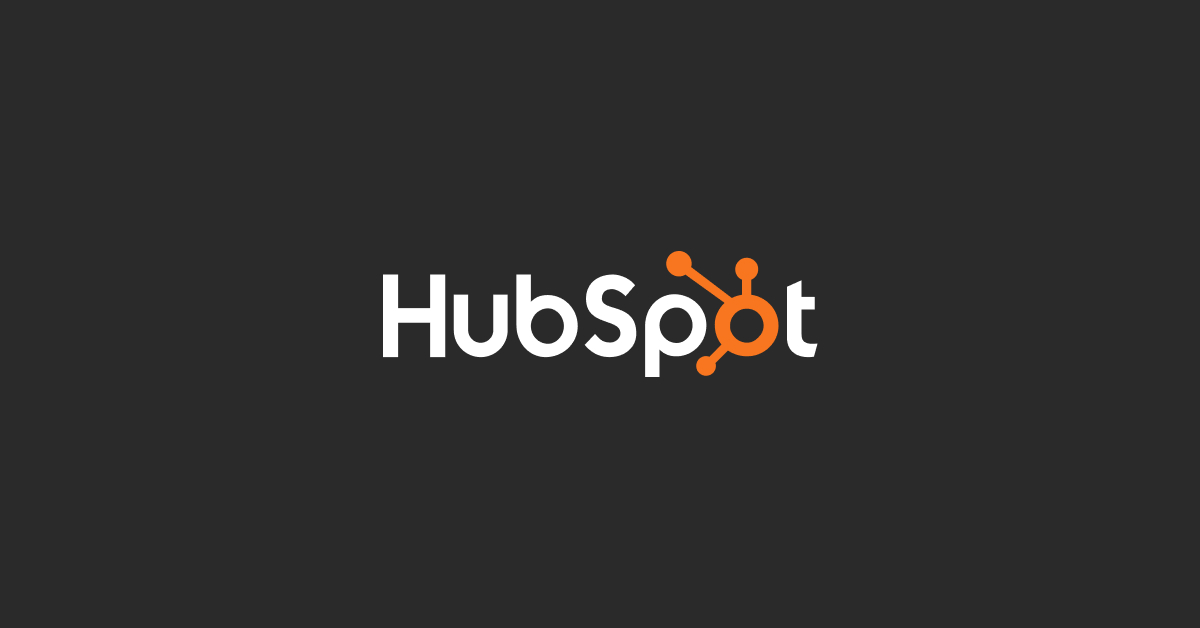Introduction
The HubSpot Marketing Hub Starter Plan is an entry-level solution designed to empower small businesses and startups with powerful marketing tools at an affordable price.
HubSpot’s suite of products is renowned for its ability to simplify complex marketing, sales, and service tasks, and the Marketing Hub Starter Plan is no exception.
With this plan, businesses gain access to essential features that allow them to attract, engage, and delight customers without breaking the bank.
You can also watch our Beginner's Tutorial for HubSpot CRM below:
- Overview of HubSpot Marketing Hub Starter Plan: Understanding what the Starter Plan offers and how it fits within HubSpot’s suite of products.
- Key Features of the HubSpot Marketing Hub Starter Plan: A deep dive into the core tools and capabilities, including email marketing, landing pages, forms, and analytics.
- Benefits of Using the HubSpot Marketing Hub Starter Plan: How small businesses can benefit from the Starter Plan’s features.
- Step-by-Step Guide to Setting Up HubSpot Marketing Hub Starter: A detailed guide to getting started with the Starter Plan.
- Best Practices for Maximizing the HubSpot Marketing Hub Starter Plan: Tips and strategies to get the most out of your investment.
- Use Cases and Success Stories: Real-world examples of businesses using the Starter Plan effectively.
- Comparing HubSpot Marketing Hub Starter with Other Plans: How the Starter Plan stacks up against HubSpot’s other tiers.
- Common Challenges and Solutions: Troubleshooting common issues and optimizing your HubSpot Marketing Hub Starter experience.
- Future Trends and Updates: Insights into the evolution of HubSpot’s Marketing Hub Starter Plan and what to expect in the future.
Let’s dive into the world of the HubSpot Marketing Hub Starter Plan and explore how it can elevate your marketing game.
1: Overview of HubSpot Marketing Hub Starter Plan
1.1 What is the HubSpot Marketing Hub Starter Plan?
The HubSpot Marketing Hub Starter Plan is designed to provide small businesses with essential marketing tools that are easy to use and cost-effective. It is an ideal choice for companies just starting with digital marketing or those looking to scale their efforts without the complexities of advanced marketing software.
Key Features of the Starter Plan:
- Email Marketing: Create, send, and analyze marketing emails that engage your audience.
- Forms: Capture leads with customizable forms and sync them directly into your CRM.
- Landing Pages: Design professional landing pages that convert visitors into leads.
- Ad Management: Manage your social and search ads directly within HubSpot.
- Analytics Dashboard: Track the performance of your marketing efforts with integrated analytics.
1.2 Who Should Use the HubSpot Marketing Hub Starter Plan?
The HubSpot Marketing Hub Starter Plan is perfect for:
- Small Businesses: Companies looking to grow their marketing efforts without a significant upfront investment.
- Startups: Early-stage businesses that need scalable marketing tools to attract and nurture leads.
- Freelancers and Solopreneurs: Individuals managing their own marketing who need a simple yet powerful toolset.
- Marketing Teams on a Budget: Teams that require essential marketing features without the complexity or cost of enterprise-level software.
1.3 How Does the Starter Plan Fit into HubSpot’s Product Suite?
HubSpot offers a range of products designed to help businesses grow better, including Marketing Hub, Sales Hub, Service Hub, CMS Hub, and Operations Hub. The Marketing Hub is segmented into different tiers—Starter, Professional, and Enterprise—to cater to varying business needs.
Comparison of HubSpot Marketing Hub Plans:
- Starter Plan: Entry-level with core features for small businesses and basic marketing needs.
- Professional Plan: Offers more advanced features, including marketing automation, A/B testing, and custom reporting.
- Enterprise Plan: Designed for large organizations with complex needs, offering advanced customization, account-based marketing, and multi-touch revenue attribution.
The Starter Plan serves as a stepping stone for businesses to get acquainted with HubSpot’s powerful marketing tools and eventually upgrade as their needs grow.
1.4 Why Choose HubSpot Marketing Hub Starter Plan?
Choosing the HubSpot Marketing Hub Starter Plan provides several advantages:
- Affordable Pricing: Gain access to essential marketing tools at a budget-friendly price.
- Ease of Use: HubSpot’s user-friendly interface allows teams to quickly learn and implement marketing strategies.
- Integration with HubSpot CRM: Seamlessly integrate with HubSpot’s free CRM to manage contacts, track deals, and automate communication.
- Scalability: Start with the basics and scale your marketing capabilities as your business grows.
2: Key Features of the HubSpot Marketing Hub Starter Plan
2.1 Email Marketing
Email marketing remains one of the most effective channels for engaging customers, and HubSpot’s Marketing Hub Starter Plan offers robust tools to create and manage email campaigns.
Key Features of Email Marketing in the Starter Plan:
- Drag-and-Drop Editor: Design professional-looking emails without needing coding skills.
- Personalization: Use contact properties to personalize emails, improving engagement rates.
- Email Templates: Access pre-designed templates that can be customized to match your brand.
- Email Analytics: Track open rates, click-through rates, and overall performance to refine your strategy.
Best Practices for Email Marketing:
- Segment Your Audience: Use segmentation to send targeted messages that resonate with specific groups of contacts.
- A/B Testing: Test different subject lines, content, and CTAs to determine what works best.
- Optimize for Mobile: Ensure your emails are mobile-friendly, as a significant portion of users will view them on smartphones.
2.2 Forms and Lead Capture
Capturing leads is crucial for growing your business, and the Marketing Hub Starter Plan includes powerful form tools that integrate seamlessly with your website and landing pages.
Key Features of Forms:
- Customizable Form Builder: Create forms that capture the exact information you need from your visitors.
- Progressive Profiling: Collect different data points each time a contact fills out a form, gradually building a complete profile.
- Lead Routing: Automatically assign new leads to the appropriate sales reps based on predefined criteria.
Best Practices for Form Usage:
- Keep It Simple: Limit the number of fields to avoid overwhelming visitors.
- Use Smart Fields: Pre-fill known information to reduce friction and improve the user experience.
- Include Clear CTAs: Ensure that the purpose of the form is clear, and guide users on what to expect after submission.
2.3 Landing Pages
Landing pages are essential for converting traffic into leads, and HubSpot’s Starter Plan provides an easy-to-use builder to create high-converting pages.
Key Features of Landing Pages:
- Drag-and-Drop Editor: Design landing pages without coding, using pre-built modules and templates.
- Mobile Optimization: All landing pages are automatically optimized for mobile devices, ensuring a seamless experience for all users.
- Built-In Analytics: Track performance metrics such as views, submissions, and conversion rates directly from the landing page dashboard.
Best Practices for Landing Pages:
- Use Clear Headlines: Your headline should immediately convey the value proposition of your offer.
- Focus on One CTA: Avoid multiple calls to action that could distract the visitor. Keep the focus on the main goal.
- A/B Test Elements: Test different layouts, headlines, and CTAs to find the best-performing combinations.
2.4 Ad Management
Managing your ads directly within HubSpot allows you to track the effectiveness of your campaigns and see how they contribute to lead generation.
Key Features of Ad Management:
- Integrated Platform: Manage ads across Google, Facebook, and LinkedIn directly within HubSpot.
- Conversion Tracking: Track how your ads contribute to lead generation, nurturing, and conversions.
- Audience Targeting: Use your HubSpot contact lists to create highly targeted ad audiences.
Best Practices for Ad Management:
- Retarget Your Audience: Use retargeting to re-engage visitors who have interacted with your site but didn’t convert.
- Align Ads with Landing Pages: Ensure that your ad copy matches the content and offer on the landing page to maintain a cohesive experience.
- Monitor Ad Spend: Regularly check your ad performance and adjust budgets to optimize ROI.
2.5 Analytics and Reporting
The Marketing Hub Starter Plan provides integrated analytics to help you measure the effectiveness of your marketing efforts and make data-driven decisions.
Key Features of Analytics:
- Traffic Analytics: Monitor the sources of your website traffic, including organic, social, email, and paid channels.
- Contact Insights: See detailed information on how contacts are interacting with your marketing assets.
- Campaign Performance: Evaluate the performance of individual campaigns, identifying what works and what needs improvement.
Best Practices for Analytics:
- Set Clear Goals: Define what success looks like for each campaign and track metrics that align with your objectives.
- Regularly Review Reports: Use the insights gained from analytics to adjust your strategy and improve performance.
- Leverage Dashboards: Create custom dashboards that provide a quick snapshot of your key metrics and performance indicators.
3: Benefits of Using the HubSpot Marketing Hub Starter Plan
3.1 Cost-Effective Solution for Small Businesses
The HubSpot Marketing Hub Starter Plan offers powerful marketing tools at an affordable price, making it accessible to small businesses with limited budgets.
Cost Benefits:
- No Hidden Fees: Transparent pricing with no hidden costs, making it easy to budget for your marketing software.
- All-in-One Solution: Eliminate the need for multiple tools, saving money on software subscriptions and reducing complexity.
- Scalable: Start small and add features as your business grows, ensuring you only pay for what you need.
3.2 Improved Lead Generation and Management
The combination of forms, landing pages, and ad management tools allows businesses to capture and nurture leads effectively.
Lead Management Benefits:
- Centralized Data: All lead data is captured directly in HubSpot CRM, providing a unified view of your contacts.
- Automated Lead Nurturing: Use workflows to automatically send follow-up emails, assign leads to sales reps, and keep prospects engaged.
- Enhanced Segmentation: Segment your leads based on behavior, demographics, and engagement to deliver more personalized communications.
3.3 Enhanced Customer Insights and Personalization
HubSpot’s Marketing Hub Starter Plan provides valuable insights into customer behavior, allowing businesses to personalize their marketing efforts.
Personalization Benefits:
- Behavior Tracking: Understand how visitors interact with your site, emails, and ads to tailor your messaging.
- Dynamic Content: Use contact properties to create personalized content that resonates with your audience.
- Segmentation: Create targeted lists that allow you to send relevant messages to specific groups of contacts.
3.4 Streamlined Marketing Workflows
The Marketing Hub Starter Plan’s user-friendly tools help streamline marketing workflows, making teams more efficient and effective.
Workflow Benefits:
- Automated Processes: Automate repetitive tasks such as follow-ups, lead scoring, and data entry.
- Improved Collaboration: Keep your marketing efforts aligned by using shared dashboards, reports, and campaign calendars.
- Time Savings: Reduce the time spent on manual tasks, allowing your team to focus on strategic initiatives.
3.5 Access to HubSpot’s Ecosystem
The HubSpot Marketing Hub Starter Plan integrates seamlessly with other HubSpot products, providing access to a broader ecosystem of tools that enhance your marketing, sales, and service efforts.
Ecosystem Benefits:
- CRM Integration: HubSpot’s free CRM integrates directly with the Starter Plan, providing a single source of truth for all customer data.
- Access to HubSpot Marketplace: Explore hundreds of integrations, templates, and apps that expand the functionality of your Marketing Hub.
- Support and Community: Benefit from HubSpot’s extensive support resources, including tutorials, forums, and a vibrant user community.
4: Step-by-Step Guide to Setting Up HubSpot Marketing Hub Starter
4.1 Getting Started with HubSpot Marketing Hub Starter
Setting up the HubSpot Marketing Hub Starter Plan is straightforward, but a clear process ensures you maximize your setup.
Steps to Get Started:
- Create Your HubSpot Account: Sign up for the HubSpot Marketing Hub Starter Plan through HubSpot’s website.
- Set Up Your Account: Configure your account settings, including company details, time zones, and user roles.
- Connect Your Domain: Link your website domain to HubSpot to publish landing pages and track performance.
4.2 Importing Your Contacts
Importing your existing contacts into HubSpot CRM is a critical first step to ensure that all your customer data is in one place.
Steps to Import Contacts:
- Prepare Your Data: Clean up your contact lists by removing duplicates and formatting data consistently.
- Upload Your File: Use HubSpot’s import tool to upload your contact lists in CSV or Excel format.
- Map Fields: Ensure that all fields in your file match the correct HubSpot properties to avoid data discrepancies.
4.3 Setting Up Email Marketing
Email marketing is one of the most powerful tools in the Starter Plan. Setting up your email campaigns involves creating templates, segmenting your lists, and defining your goals.
Steps to Set Up Email Campaigns:
- Create an Email Template: Use HubSpot’s drag-and-drop editor to design your email template, including your branding elements.
- Build Segments: Segment your audience based on criteria such as engagement, location, or buying stage.
- Schedule and Send: Schedule your email to go out at optimal times, or set it to send immediately.
4.4 Designing Landing Pages and Forms
Landing pages and forms are essential for capturing leads and driving conversions. HubSpot makes it easy to create these elements without technical expertise.
Steps to Create Landing Pages and Forms:
- Design Your Landing Page: Use the landing page builder to create a page that aligns with your campaign goals.
- Add Forms: Embed a form on your landing page to capture visitor information and turn traffic into leads.
- Set Up Follow-Up Actions: Configure follow-up actions, such as thank-you emails or redirects to a relevant page.
4.5 Integrating Ad Management
HubSpot’s ad management tools allow you to track ad performance and optimize campaigns based on real-time data.
Steps to Integrate Ad Management:
- Connect Ad Accounts: Link your Google, Facebook, and LinkedIn ad accounts to HubSpot for integrated management.
- Set Up Tracking: Enable ad tracking to measure the impact of your campaigns on lead generation.
- Create Custom Audiences: Use your HubSpot contact lists to create targeted audiences for your ads.
4.6 Setting Up Analytics and Reporting
Analytics are essential for measuring your marketing performance and making data-driven decisions.
Steps to Set Up Analytics:
- Configure Your Dashboard: Set up custom dashboards that display the key metrics most relevant to your goals.
- Set Up Goals: Define marketing goals, such as lead generation targets or conversion rates, to track progress.
- Monitor Performance: Regularly review your analytics to identify trends, successes, and areas for improvement.
5: Best Practices for Maximizing the HubSpot Marketing Hub Starter Plan
5.1 Focus on Personalization and Segmentation
Personalization and segmentation are key to improving engagement rates and delivering relevant content to your audience.
Best Practices for Personalization:
- Use Contact Properties: Leverage data from contact properties to personalize email content, such as using a contact’s first name.
- Dynamic Content: Create dynamic content blocks in emails and landing pages that change based on contact information.
- Behavioral Triggers: Set up workflows that trigger actions based on contact behavior, such as visiting a specific page or submitting a form.
5.2 Utilize Automation for Efficiency
Automation is a powerful feature that can help streamline your marketing efforts, saving time and reducing manual tasks.
Automation Best Practices:
- Welcome Series: Set up automated welcome emails for new subscribers, introducing them to your brand and offerings.
- Lead Nurturing Workflows: Create nurturing workflows that guide leads through the buyer’s journey with targeted content.
- Internal Notifications: Use internal workflows to notify your team when a lead takes a key action, such as requesting a demo.
5.3 Regularly Review and Optimize Campaigns
Continuous optimization is essential to maintain and improve the performance of your marketing campaigns.
Optimization Tips:
- A/B Test Regularly: Test different elements of your emails, landing pages, and ads to identify what resonates with your audience.
- Monitor Key Metrics: Keep an eye on important metrics like open rates, conversion rates, and ROI to measure success.
- Adjust Strategies: Use data insights to adjust your marketing strategies, ensuring you’re always working towards your goals.
5.4 Leverage HubSpot’s Knowledge Resources
HubSpot offers a wealth of resources to help you get the most out of the Marketing Hub Starter Plan.
Resources to Explore:
- HubSpot Academy: Access courses, certifications, and tutorials that cover all aspects of using HubSpot effectively.
- Community Forums: Engage with other HubSpot users to share tips, ask questions, and find solutions.
- Support Documentation: Use HubSpot’s extensive documentation to troubleshoot issues and learn about new features.
5.5 Plan for Future Growth
While the Starter Plan provides a solid foundation, it’s important to plan for future growth as your marketing needs evolve.
Growth Planning Tips:
- Track Your Progress: Regularly review your marketing performance to assess when it might be time to upgrade to a more advanced HubSpot plan.
- Explore New Features: As your business grows, explore additional HubSpot features that can support your expanded marketing efforts.
- Evaluate ROI: Continuously evaluate the ROI of your marketing efforts to ensure you’re making the best use of your resources.
6: Use Cases and Success Stories
6.1 Real-World Examples of HubSpot Marketing Hub Starter Plan Success
Many small businesses have successfully implemented the HubSpot Marketing Hub Starter Plan to elevate their marketing efforts. Here are a few examples:
Case Study 1: A Boutique Agency’s Email Marketing Success
- Challenge: A boutique marketing agency struggled to manage their email marketing efforts effectively with their existing tools.
- Solution: By adopting the HubSpot Marketing Hub Starter Plan, they were able to create personalized email campaigns that engaged their audience and increased open rates.
- Outcome: The agency saw a 35% increase in email engagement and was able to manage all their marketing efforts from one platform.
Case Study 2: E-commerce Brand Boosts Lead Generation
- Challenge: An e-commerce brand needed a better way to capture and nurture leads from their website traffic.
- Solution: They used HubSpot’s forms and landing pages to capture leads and automated follow-up emails to keep prospects engaged.
- Outcome: The brand increased their lead capture rate by 50% and saw a significant boost in sales conversions.
Case Study 3: Nonprofit Organization Enhances Donor Communication
- Challenge: A nonprofit organization found it challenging to manage donor communication and track engagement.
- Solution: HubSpot Marketing Hub Starter provided the tools they needed to send personalized emails, manage donor lists, and track the impact of their campaigns.
- Outcome: The organization improved donor retention and engagement, resulting in higher donation rates.
6.2 Lessons Learned from HubSpot Marketing Hub Starter Implementations
Key Takeaways:
- Start Small, Scale Big: The Starter Plan offers a great entry point, and many businesses have scaled to Professional or Enterprise as their needs grew.
- Utilize Training Resources: HubSpot’s Academy and community resources were instrumental in helping businesses fully leverage the Starter Plan’s features.
- Prioritize Personalization: Personalizing communications based on contact data consistently led to higher engagement and conversion rates.
7: Comparing HubSpot Marketing Hub Starter with Other Plans
7.1 HubSpot Marketing Hub Professional vs. Starter
The Professional Plan offers more advanced features, but how do they compare to the Starter Plan?
Key Differences:
- Advanced Automation: Professional includes more complex automation capabilities, including branching workflows.
- A/B Testing: Available in Professional, A/B testing allows for more sophisticated optimization of emails and landing pages.
- Custom Reporting: Professional users can create custom reports, providing deeper insights into marketing performance.
When to Upgrade to Professional:
- Growing Teams: When your team’s needs outgrow the Starter Plan’s capabilities.
- Advanced Marketing Needs: When you need more sophisticated tools for automation, segmentation, and reporting.
- Scalability: As your business scales, the Professional Plan provides the tools needed to support more complex marketing efforts.
7.2 HubSpot Marketing Hub Enterprise vs. Starter
Enterprise is designed for large organizations with complex needs, offering the most advanced features.
Key Differences:
- Account-Based Marketing (ABM): Enterprise supports ABM strategies, including target account lists and ABM analytics.
- Custom Objects: Create custom CRM objects to capture unique data that isn’t covered by standard HubSpot properties.
- Multi-Touch Revenue Attribution: Track the impact of every touchpoint in the customer journey, attributing revenue accurately.
When to Upgrade to Enterprise:
- Complex Marketing Operations: For businesses with multiple teams, advanced reporting needs, and a high volume of marketing activities.
- Large Sales Teams: Enterprise offers advanced sales and marketing alignment tools, perfect for large sales teams needing deeper insights.
- Custom Needs: When out-of-the-box solutions don’t meet your specific requirements, the customization capabilities of Enterprise shine.
8: Common Challenges and Solutions
8.1 Common Challenges with HubSpot Marketing Hub Starter Plan
While the Starter Plan is easy to use, businesses may encounter challenges that require troubleshooting or optimization.
Challenges:
- Limited Automation Capabilities: The Starter Plan’s automation features are basic compared to higher-tier plans.
- Email Send Limits: Starter has limitations on the number of marketing emails you can send, which can be restrictive for growing businesses.
- Reporting Limitations: Reporting capabilities in Starter are more limited, providing fewer customization options.
8.2 Solutions to Overcome Common Challenges
Overcoming Automation Limitations:
- Maximize Current Workflows: Optimize existing workflows to make the most of the available automation tools.
- Manual Workarounds: Use manual processes for tasks that can’t be automated until you’re ready to upgrade to a more advanced plan.
Managing Email Send Limits:
- Segment Your Lists: Focus on sending emails to the most engaged contacts to maximize impact within your send limits.
- Review and Purge Lists: Regularly clean your email lists to remove inactive contacts, freeing up your send quota for more valuable communications.
Enhancing Reporting Capabilities:
- Use Dashboards: Set up custom dashboards to gain a broader view of your key metrics, even if the reporting is less detailed.
- Supplement with External Tools: Consider using additional analytics tools like Google Analytics to complement HubSpot’s reporting.
9: Future Trends and Updates
9.1 What’s Next for the HubSpot Marketing Hub Starter Plan?
HubSpot continually evolves its platform, and the Starter Plan is no exception. Future updates are expected to enhance the Starter Plan’s features, making it even more valuable for small businesses.
Expected Updates:
- Improved Automation: Enhancements to the Starter Plan’s automation tools to offer more flexibility and complexity.
- Enhanced Reporting Features: Additional reporting capabilities to provide deeper insights, even at the Starter level.
- Integration Expansions: More native integrations with popular tools, expanding the ecosystem available to Starter users.
9.2 Preparing for the Future
As HubSpot continues to innovate, businesses using the Starter Plan should stay informed about updates to leverage new features as soon as they become available.
Staying Ahead:
- Subscribe to HubSpot News: Stay updated with HubSpot’s product updates and new feature announcements.
- Engage with the Community: Participate in HubSpot’s forums and user groups to learn from other users and share insights.
- Continuous Learning: Regularly revisit HubSpot Academy to keep up with the latest best practices and feature releases.
Conclusion
The HubSpot Marketing Hub Starter Plan is a powerful and accessible tool for small businesses looking to enhance their marketing efforts.
With its user-friendly interface, robust features, and seamless integration with other HubSpot products, it offers a comprehensive solution for attracting, engaging, and delighting customers.
Whether you’re a small business owner, a startup, or a marketing team on a budget, the Starter Plan provides all the essential tools you need to drive growth.
By understanding its features, leveraging best practices, and planning for future scalability, you can unlock the full potential of the HubSpot Marketing Hub Starter Plan and set your business up for long-term success.




